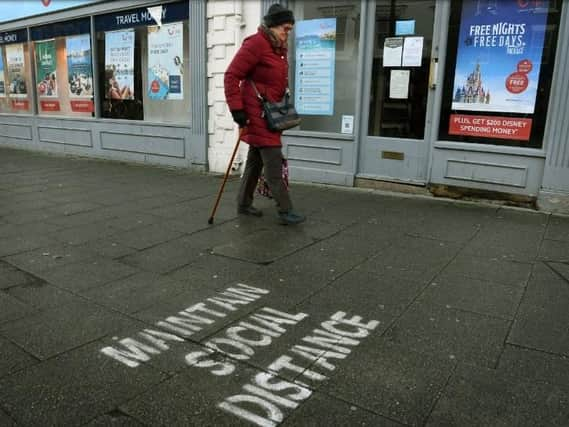Four Yorkshire areas are coronavirus hot-spots as Selby, Kirklees, Doncaster and Barnsley have highest case rates in England


Selby currently has England’s highest coronavirus rates, with 80.6 people per 100,000 positive for the virus in the district, confirmed to be caused be a workplace outbreak at a logistics warehouse.
Doncaster has a rate of 67.7 cases per 100,000, Kirklees has 66.6 cases and Barnsley has 61.2.
Advertisement
Hide AdAdvertisement
Hide AdThe rates are calculated based on the most recent seven day reporting period, which means they may have fluctuated over the past few days.
An expert who works with Public Health England to track case numbers across the country has warned the rates could be due to more mixing happening in areas of high depravation which have higher than average levels of multi-occupancy housing.
Professor Alastair Grant, of the University of East Anglia, said: “There are a number of areas in Yorkshire which have had consistently above average infection rate. They are typically urban areas with high levels of deprivation.
“In those deprived communities you often have people who can’t afford to self-isolate.
Advertisement
Hide AdAdvertisement
Hide Ad“If you’re on a zero hours contract, and you don’t work, you don’t get paid.
“There are also lots of working conditions where self isolation is difficult.
“There are also people living in high levels of multi occupation households, people who are crammed into dense accommodation in crowded conditions.”
Rachel Spencer-Henshall, Strategic Director for Public Health at Kirklees Council, said: “Rates of infection have been reducing in Kirklees over recent months. But we can’t ignore our position in the league table and the threat the virus continues to pose. We need to bring our infection rate down further, particularly with more restrictions now eased and people more likely to come into contact with different households.
Advertisement
Hide AdAdvertisement
Hide Ad“We’ve seen stubbornly high rates of infection across West Yorkshire for long parts of the pandemic. That reflects working patterns, deprivation in our region and the way that the Kent variant spread across the country before Christmas. It means that we have to work together even harder to reduce infection rates and understand that there’s no room for complacency.
The council has also enlisted the help of “community champions” to ensure higher vaccine take-up in black and other minority ethnic communities, where vaccine levels have been lower than average.
In Doncaster, Rupert Suckling, director of public health, said that three separate household parties were partly to blame for the rise in cases.
A national effort is underway to reassure Muslim communities that having the vaccine during Ramadan does not mean the fast that is observed during daylight hours is broken.
Barnsley Council was approached for comment.
Comment Guidelines
National World encourages reader discussion on our stories. User feedback, insights and back-and-forth exchanges add a rich layer of context to reporting. Please review our Community Guidelines before commenting.